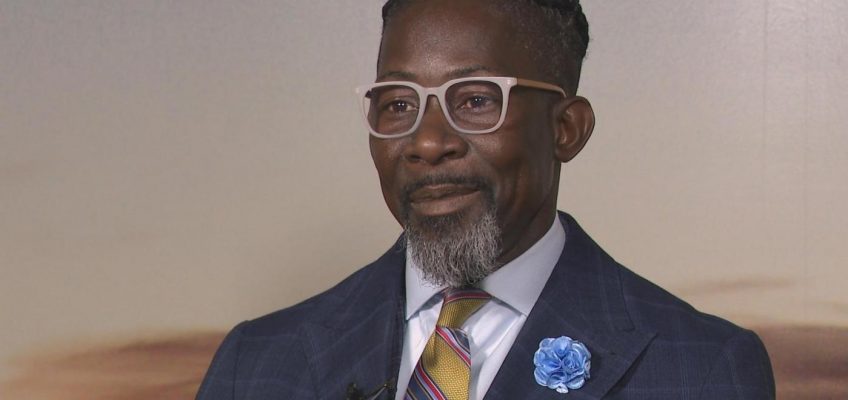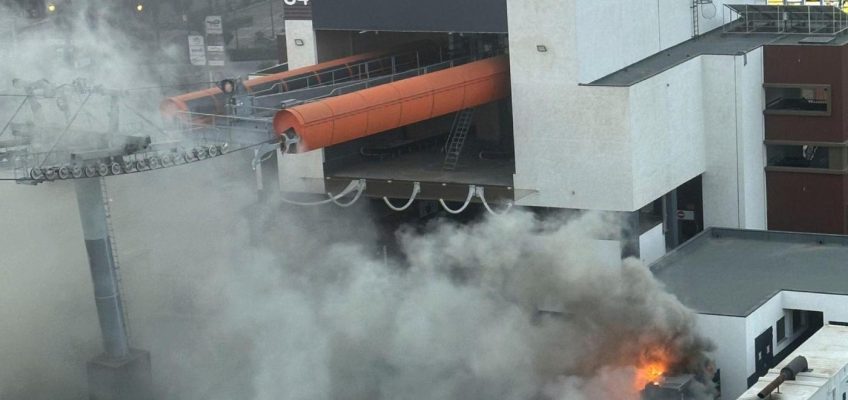By RYAN J. FOLEY, Associated Press
IOWA CITY, Iowa (AP) — A state agency revoked the professional license of the leader of Iowa’s largest school district on Monday, days after federal agents arrested him on accusations that he was living and working in the country illegally.
The Iowa Board of Educational Examiners said in a letter to Des Moines public schools Superintendent Ian Roberts that he was ineligible to hold a license because “you no longer possess legal presence in the United States.”
U.S. Immigration and Customs Enforcement agents detained Roberts on Friday, saying that he was subject to a final removal order that a judge issued in May 2024. Roberts is a native of Guyana who entered the United States on a student visa in 1999, according to ICE. He’s being held at an Iowa jail.
ICE said that Roberts fled after a traffic stop in Des Moines, and that he was apprehended with the assistance of the Iowa State Patrol. The agency said that Roberts, 54, had possessed a loaded handgun in his district-issued vehicle, a hunting knife and $3,000 cash when arrested.
Des Moines school officials said they had known nothing about Roberts being in the country illegally, and that he had signed a form verifying his eligibility to work when he was hired in 2023.
The district said Roberts had been identified as a candidate for the job by a search firm and that a “comprehensive background check” was completed as part of the process. The state board that granted Roberts a license to serve as superintendent said that process included background checks by the state police and FBI.
His arrest shocked a district where he was known as a frequent presence at community events and a champion of students during his two-year tenure. Roberts had been in education for the last two decades, and had served as a superintendent in Pennsylvania before his hiring in Iowa.
Related Articles
Federal indictment charges 3 activists with alleged ‘doxing’ of ICE agent in Los Angeles
Truck driver accused of being in the US illegally pleads not guilty in Florida crash that killed 3
Regulators struggle to keep up with the fast-moving and complicated landscape of AI therapy apps
When food banks need bread, a network of 900 home bakers answers the call
Death toll from attack at Michigan church stays at 4 after police sweep charred ruins
The Des Moines school board put Roberts on paid administrative leave during a brief special meeting Saturday. The board said it would hold another meeting Monday afternoon to consider changing Roberts’ leave status to unpaid, citing the revocation of his license.
“New information and confirmed facts will continue to inform our decisions as we develop a path forward,” said Jackie Norris, chair of the Des Moines Public Schools Board. “Two things can be true at the same time — Dr. Roberts was an effective and well-respected leader and there are serious questions related to his citizenship and ability to legally perform his duties as superintendent.”
ICE said that it had asked the Bureau of Alcohol, Tobacco, Firearms and Explosives to investigate how Roberts obtained a handgun. People in the country illegally are ineligible to possess firearms. Roberts had a history of gun ownership, however, and had been cited in 2021 in Pennsylvania and fined $100 for storing a loaded hunting rifle in his vehicle.
ICE has said that Roberts also had a separate, pending weapons charge dating to February 2020, but has not provided further details about the incident.




